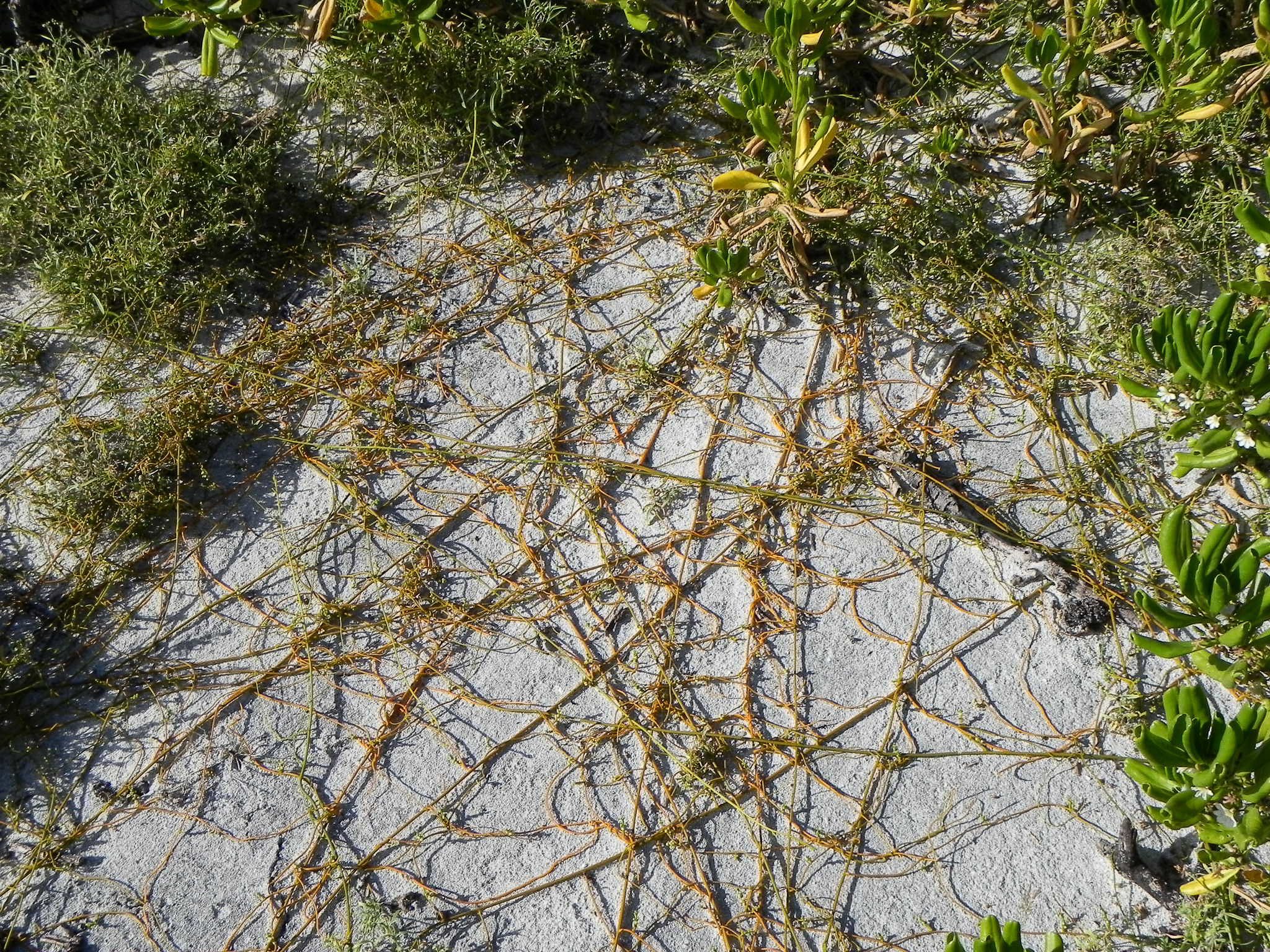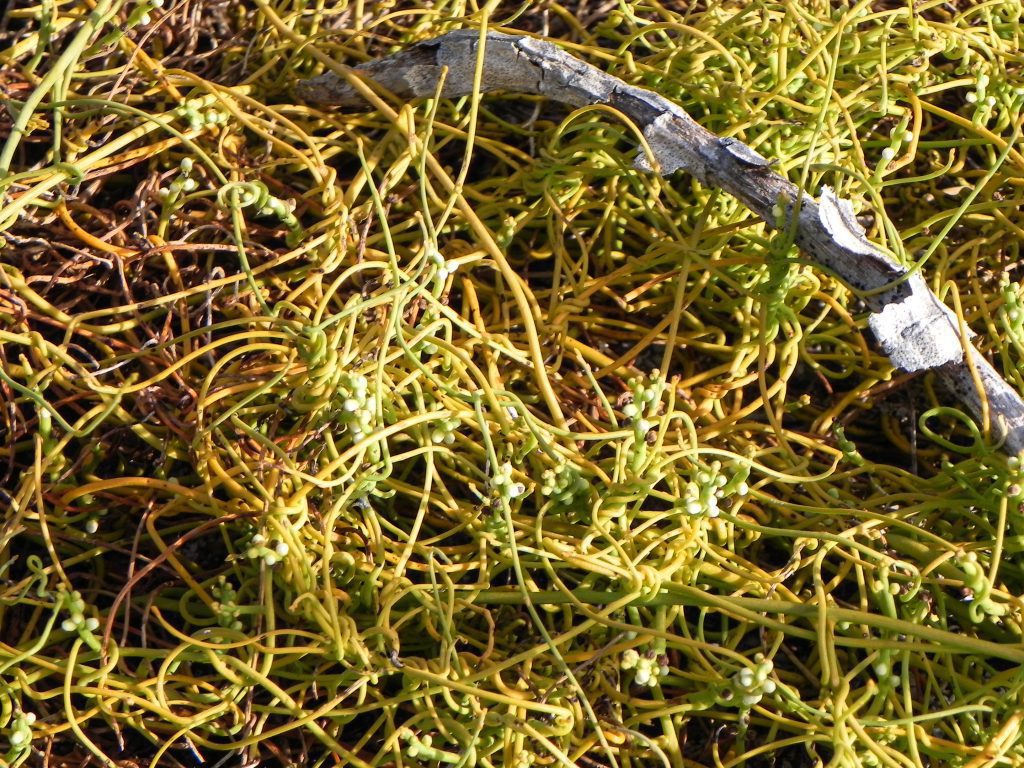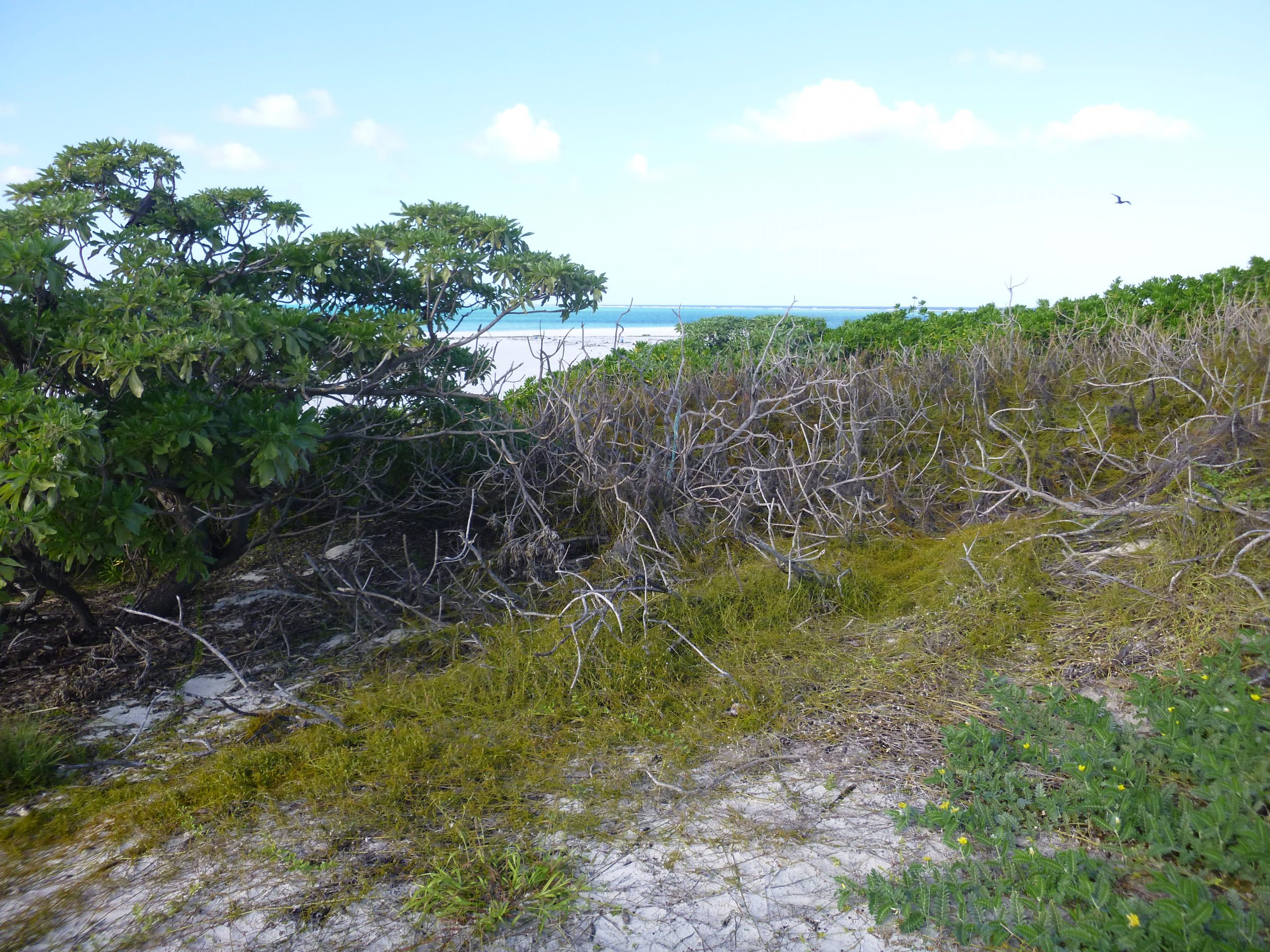
Kaunaʻoa Pehu
Cassytha filiformis
| Stated-recognized | Indigenous |
| NatureServe Heritage Rank | Vulnerable |
| North American Waterbird Conservation Plan |
High Concern |
| Regional Seabird Conservation Plan |
USFWS 2005 |
| Stated-recognized | Indigenous |
| NatureServe Heritage Rank | Vulnerable |
| North American Waterbird Conservation Plan |
High Concern |
| Regional Seabird Conservation Plan |
USFWS 2005 |

C. filiformis is a native parasitic vine, called Kaunaʻoa Pehu, that was first observed on the northern tip of Kure’s Green Island in 2001. The north point of Green Island is a low area where storms can push debris and seeds inland. C. filiformis is not present on any other atoll within the Northwestern Hawaiian Islands (NWHI). A similar-looking species is Cuscuta sandwichiana which is the kaunaʻoa most commonly grown to make lei and can be seen along coastal areas in the main Hawaiian Islands. filiformis, however, is an unrelated plant in the Convolvulaceae family with the same parasitic nature. Kaunaʻoa pehu, literally translated as “swollen kaunaʻoa,” can be distinguished by it’s larger, coarser yellowish-green stems.
Kaunaʻoa Pehu is a vine-like, autoparasitic and plant-hyperparasitic phanerogam (seed-bearing plant) in the plant family Lauraceae. It extracts nutrients from the host plant by means of specialized structures, known as haustoria, that appear as small suckers or feet where the vine contacts the host.
Kaunaʻoa Pehu produces large round seeds and can also grow from small sections of vine that are cut or broken from the parent plant. Seedlings sprout as a thick tendril that grows in search of a host. Energy stored in the seed can send out a vine upwards of one meter.
Since 2009, a diligent effort has been made to control with the hope of eventually eradicating this plant from the island. It can parasitize all plants found on Kure, and generally kills the host. This leaves open areas vulnerable to invasive plants recolonizing. It thrives on naupaka and has devastated about 35 acres of the North and East sides of the island as of 2013. At such a rate on a 200-acre low-lying atoll, this has become a major concern especially with regards to the efforts towards restoring the dune structures throughout the island.
Seabirds spread the vine when they use it for nesting material. It has also been an entanglement hazard for nesting shorebirds. Kioea (Bristle-thighed Curlew) contribute to the spread of this plant by eating the seeds. This was confirmed by boluses (hard parts of food regurgitated) found by the seep and cistern roof top— frequent spots where Kioea are observed. It is suspected that the floating woody nature of the seeds, or another bird, could have brought the vine to Kure.
Kaunaʻoa Pehu can be chemically and physically controlled, but eradication is difficult because of the long-lasting seed bank in the soil and its ability to spread by fragments. It continues to be controlled and monitored to limit the range and long-term effects on habitat and wildlife. Heightened measures are taken around the buffer zones to ensure that no plant material is on or are transferred over to the ‘clean’ side of the buffer. Removing the vine from low-growing vegetation is like rolling up a carpet. Targeting the host plant to eradicate has been the preferred approach because it requires a lower concentration of herbicide more aligned to the mix used to target other plants.









